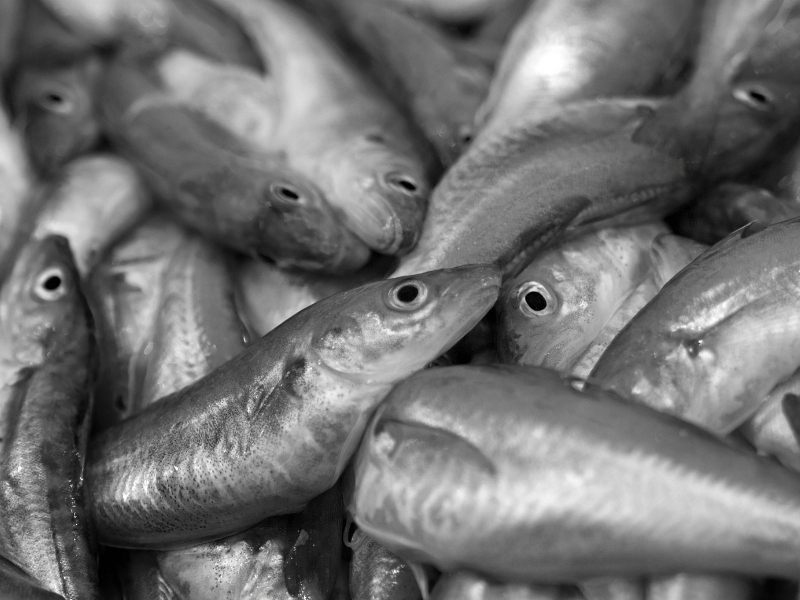Most people are familiar with salmon and tuna, but what about lesser-known fish? Whiting fish are small and a bit delicate, but they have a sweet taste and a soft texture. While they do have bones, they are easy to remove, allowing you to put on a bit of a presentation to your guests.
Does whiting fish have bones? Whiting fish do indeed have bones. They have a skeleton just like other fish, including plenty of side pin bones. However, while bones can be hard to remove in other types of fish, leaving people to be a bit wary of eating, it is quite easy to remove the bones from whiting fish. After you have cooked your whiting fish, use a filet knife to slice the fish in half. Then, gently pull on the skeleton and you’ll be amazed when it comes out whole.
There’s something quite dramatic about serving a fish whole to a table full of guests. And, if you can accurately remove the skeleton, it’s even more impressive.
What kind of fish is whiting?

A whiting fish is a small fish with white flesh. There are different species of whiting, although most people are unable to tell the difference between them.
These species include Northern kingfish, Southern kingfish, and Gulf kingfish. However, in the United States, you will sometimes simply see the fish as English Whiting.
Furthermore, in Canada, the term whiting fish is sometimes used for a different species, the pollock fish.
While the Gulf kingfish species has dark bands on it, the other species have mostly silvery bodies, and sometimes black marks on the tails.
The fish, no matter which species will only weigh a maximum of 3 pounds. Whiting fish can be found in the North Atlantic Ocean, near the United Kingdom, and the Mediterranean Sea.
Is Whiting fish bony?
Whiting fish, like most fish, do have bones. However, what’s unique about them is that you can usually remove the entire skeleton with one grasp.
This means you don’t have to worry about removing individual bones, or worse, forgetting one and having someone choke on it.
The bones of a whiting fish are primarily made of small pin bones, which run up the side of its skeleton. To remove the entire skeleton whole, you will first need to cook the whole fish.
Whiting fish are relatively small, so they are better cooked whole, anyway. After they have been cooked, you should gently cut into the fish, essentially trying to cut off the top half of the fish, just above the skeleton.
Once the skeleton is exposed, gently tug on it and it should come out. You may need to make a few further cuts, especially around the tail, although the tail skeleton should also be able to come out in one piece.
Can you eat the bones of whiting fish?
It is not recommended to eat the bones of whiting fish. While they are tiny, they can still easily be caught in your throat. This can result not only in an unpleasant feeling but could also scratch your throat, leading to an infection.
What does Whiting taste like?
One of the reasons people enjoy whiting fish so much is because of its taste. The meat is almost sweet in taste and its flavor is quite delicate. You don’t have to add too much seasoning as the fish tastes good on its own.
As for texture, expect a very light, flaky feel to it that is a nice balance between soft and firm. When you cook whiting fish, you have to pay close attention to not overcooking it. Because the meat is so delicate, if you overcook it, it can turn quite mushy, making it far less appealing.
Instead, opt to cook it slightly underdone. It is still safe to eat and this will ensure the fish is still flaky.
While some fish are quite oily, such as salmon, trout, and herring, whiting fish is not very oily. If you are someone who doesn’t enjoy the oily texture of popular fish, whiting fish is a better option.
Is Whiting Fish Good For You: Nutritional Information

If you are looking for a meat alternative, but don’t want to become vegetarian, fish is a great, healthy alternative. Whiting fish are packed with nutrients, making them an ideal option for any diet.
In addition to their large protein content, you can also find high amounts of good cholesterol and potassium.
As for vitamins, whiting fish is an amazing source of vitamin B12 as well as a good source of vitamin B6 and niacin. For minerals, they are a good source of magnesium, phosphorus, and magnesium.
Unlike other types of fish, whiting fish is not oily, so this is a consideration if you are trying to reduce oil levels in your diet.
How to Catch Whiting?
For those who are interested in trying their hand at catching whiting fish, first scout out a location for them. They can often be found in surf regions and are migratory fish. So, when it is warmer out, they are found in the northern, colder parts of the ocean.
Live bait is best to catch whiting fish, and they enjoy worms, although they live close to the seafloor so make sure your bait is able to sink.
Be sure to use a smaller hook that can be hidden in the bait. Then, when you feel a bite, be careful and gently reel it in.
What fish is similar to Whiting?
Cod and tilapia are similar to whiting fish. In Canada, the term whiting fish can actually refer to Alaskan pollock fish.
Whiting fish are rather small and their white meat may make them seem similar to other fish with similar characteristics.
Conclusion
If you’re looking for a new type of fish to try, whiting fish is sometimes forgotten but still delicious. They have a delicate, non-oily texture to them and their bones are easy to remove. Simply cook your whiting fish whole, practice some knife skills, and remove the skeleton in one swift move.